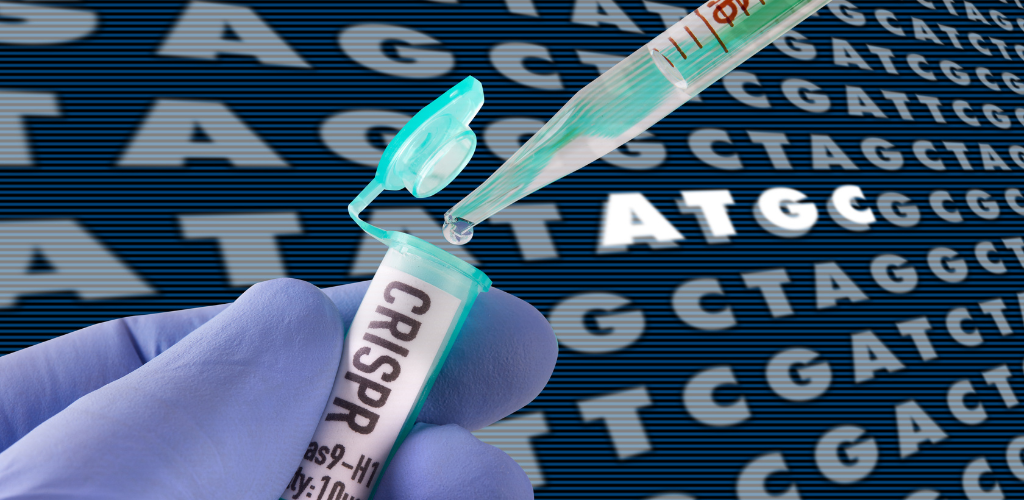CRISPR (Clustered Regularly Interspaced Short Palindromic Repeats) technology has emerged as a revolutionary tool for genome editing, enabling scientists to probe biological function, dissect genetic mechanisms, and potentially treat diseases. This technology, for which biochemists Jennifer Doudna and Emmanuelle Charpentier were awarded the Nobel Prize in Chemistry, has garnered significant attention due to its potential, as well as the ethical and public health implications associated with its use.
What are some of the potential applications of CRISPR technology in medicine?
CRISPR technology has the potential to revolutionise medicine with its ability to edit DNA sequences in whole organisms. Some of the potential applications of CRISPR technology in medicine include:
- Disease Treatment: CRISPR can be used to edit disease-causing DNA sequence variants in egg/sperm cells or embryo cells, potentially treating or preventing genetic diseases.
- Gene Therapy: CRISPR can be used to target and cleave specific DNA sequences, enabling the correction of genetic mutations associated with various diseases.
- Disease Detection: CRISPR can be used as a diagnostic tool for detecting infectious and non-infectious diseases using a person’s saliva, blood, or urine.
- Disease Models: CRISPR can be used to create disease models, allowing researchers to study the impact of diseases on particular organs or tissues and test new treatments.
- Cell Therapy: CRISPR can be used to edit cells for therapeutic purposes, such as enhancing the cancer-fighting ability of immune cells.
- In Situ Genome Editing: CRISPR can be used to edit DNA sequences in situ, allowing for the correction of genetic mutations in specific cells or tissues.
- Public Health: CRISPR can be used for disease surveillance, diagnosis, and treatment, potentially reducing health disparities and contributing to food security.
While CRISPR technology holds great promise, it also raises complex ethical considerations and potential risks. Ongoing research and dialogue are essential to fully understand the potential and risks associated with CRISPR technology and ensure its responsible and beneficial deployment in medicine.
The Dark Side of CRISPR:
While CRISPR holds promise for treating diseases, its far-reaching implications have raised complex ethical considerations. The technology’s potential to eliminate genetic differences and its use in embryo editing have been subjects of concern. The ethical choices posed by CRISPR are multifaceted, and the technology’s application demands careful consideration of its societal and moral implications.
CRISPR in Public Health:
CRISPR’s potential in disease surveillance, diagnosis, and treatment offers significant promise for public health. It may enable the identification, regulation, and correction of genetic contributors to chronic diseases, potentially reducing health disparities. Additionally, CRISPR’s capacity to combat infectious disease transmission and contribute to food security underscores its potential public health benefits.
The Power and the Promise of CRISPR/Cas9 Genome Editing for Clinical Application with Gene Therapy:
CRISPR’s excellent ability to target and cleave specific DNA sequences has positioned it as a powerful tool for clinical applications, particularly in gene therapy. The technology’s precision and potential to address genetic hemolytic diseases, sickle cell disease, and various cancers highlight its promise for clinical interventions.
Is CRISPR Worth the Risk?
The rapid development of CRISPR technology has sparked discussions about its potential risks and benefits. While its applications hold promise, concerns have been raised about its impact on gene function and the need for a thorough understanding of its implications before widespread use.
Conclusion :
In conclusion, CRISPR technology represents a groundbreaking tool with the potential to transform disease treatment, public health, and clinical applications. However, its use necessitates a nuanced understanding of its ethical, societal, and public health implications to ensure responsible and beneficial deployment. Ongoing research and dialogue are essential to fully grasp the potential and risks associated with CRISPR technology.
Citations:
[1] https://www.science.org/doi/10.1126/science.add8643
[2] https://www.scientificamerican.com/article/the-dark-side-of-crispr/
[3] https://www.ncbi.nlm.nih.gov/pmc/articles/PMC10323846/
[4] https://www.ncbi.nlm.nih.gov/pmc/articles/PMC9481961/
[5] https://insights.som.yale.edu/insights/is-crispr-worth-the-risk




